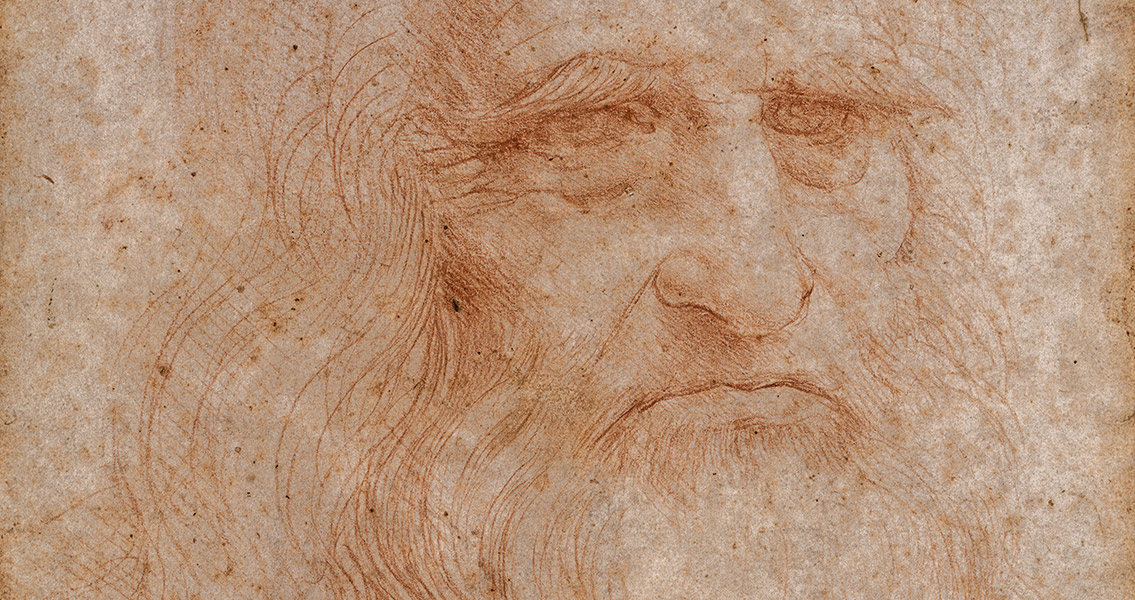<![CDATA[Leonardo Da Vinci, one of the most renowned figures in history, died on 2nd May, 1519. He passed away at Château of Cloux, near Amboise, having been invited to France two years earlier to serve as Premier Painter and Engineer and Architect to the King. In many ways the archetype of the Renaissance Man, Da Vinci's artworks, including the Mona Lisa and the Last Supper, would have been enough to ensure his place in history. Beyond that though, he was also an innovative engineer, scientist and inventor, securing his position as one of the greatest minds in history. Through Da Vinci's surviving notebooks the eclecticism of his mind can be seen, with their detailed studies on architecture, geometry, anatomy, geology, gravity and optics. His sketches and designs reveal he had conceived of inventions such as the helicopter, bicycle, airplane and parachute hundreds of years before they were finally created. For someone who would go on to achieve so much, Da Vinci's beginnings were humble. The illegitimate son of a lawyer, he was born in the hills of Tuscany, close to the village of Anchiano, in what is today Italy. His mother was a peasant girl, but Da Vinci was raised by his father and stepmothers, moving to his father's family's estate near the village of Vinci at the age of five. Perhaps due to his illegitimacy, Da Vinci was afforded only a basic education in literacy and numeracy, yet his prodigious artistic talents still shone through. At the age of fourteen he was awarded an apprenticeship with Andrea del Verrocchio, a master artist in Florence. At twenty, Da Vinci received the title of master artist at Florence’s Guild of Saint Luke, an accolade which allowed him to start his own workshop. At around the age of thirty, Da Vinci moved to Milan to work for the powerful Sforza family. Remarkably, it was a position Da Vinci won not on the basis of his visual art, but on his ability to sketch and design war machines such as fearsome chariots and crossbows. So, for seventeen years he worked for the powerful family as both a designer of weapons, and their artist and sculptor. It was a period which saw him produce one of his most legendary artworks, a mural to the 'Last Supper' in the refectory of the Monastery of Santa Maria delle Grazie, Milan. The French invasion of Milan ultimately forced Leonardo and the Sforza family to flee the city. Making his way back to Florence. Leonardo started to focus on portrait paintings, eventually producing his most famous work, the Mona Lisa, a remarkable piece of art which still attracts millions of visitors to this day. In 1506, Leonardo returned to Milan, where he stayed until 1513. He then spent three years in Rome, prior to the invitation by the French king Francis I for the artist to go and work in France for what would prove the final few years of his life. Leonardo's notebooks weren't published in his own lifetime, meaning his scientific and engineering works were unable to have an influence on the Renaissance period. What they reveal however, is that Leonardo Da Vinci was an embodiment of the interconnected, the idea that science, art and invention were not separate fields but related and integral to each other. It was this outlook that likely fostered his unique perspective in so many fields, a sculptor with the technical eye of an engineer, an inventor with the creativity of a fine artist.]]>
Ultimate Renaissance Man Da Vinci Passes Way
